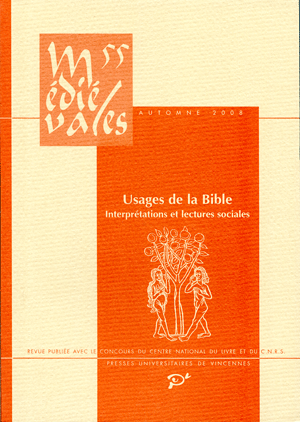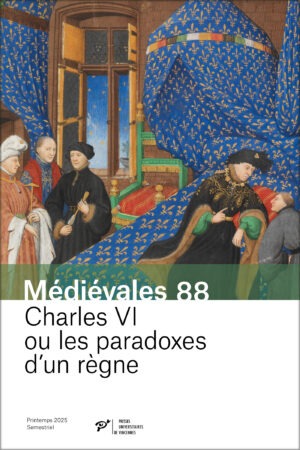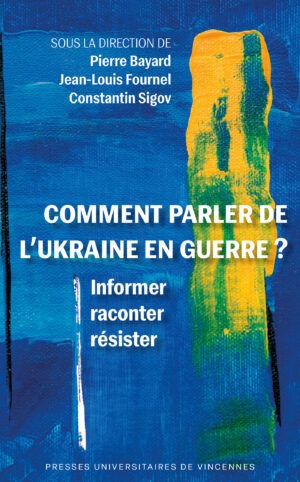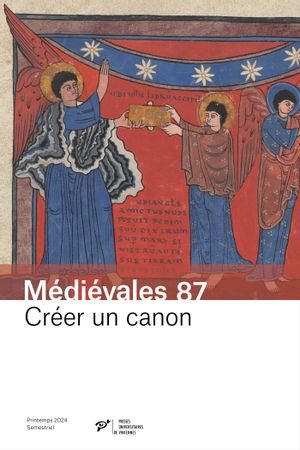Sumi SHIMAHARA
Daniel and Political Visions in the Carolingian Era
During the Carolingian era, biblical exegis, especially on the book of Daniel, underwent a revival. The topic of the succession of empires, the one – which is linked- of the deciduous nature of earthly power, met the concerns of the Carolingians after the break-up of the Empire in 843. The figure of the Prophet, mediator chosen by God and adviser of kings, is used as a model : during the period, the power is theorized in terms of completing ministeria and is practiced according to important personal relationship. We can appreciate thus how the Carolingian scholars – biblical commentators, authors of specula or uisiones – used the biblical and patristic matrix in order to give a meaning to historical events of their time, and to legitimate some political actions.
Exegesis – mirrors – visions – prophet
Isabelle ROSÉ
The Sin and Punishment of Ananias and Saphira and the Discursive Construction of an Antithetical Monastic Model (2nd-10th C.)
The Acts of the Apostles (Acts 5: 1-11) tell how Ananias and Sapphira, a married couple who wished to join the Apostolic Church, were punished by Peter for hiding a portion of the money they had made from the sale of their house, rather than completely sharing their wealth with the community. Focusing on commentaries of Acts 5: 1-11, from the Patristic era to the protofeudal ages, this paper analyses how the story of Ananias ans Shapphira was understood and employed through the centuries, especially in relation to monasticism. After being used to reaffirm the Dogma of the Trinity and to legitimize the priest’s power to constrain, the biblical story played an important role in defining both the communal life and the circulation of goods. By insisting on these two later aspects in their writings, the monastic reformers of the 10th century made the damned couple an antithetical model for cenobitism (assimilating even the figure of Ananias to that of an heresiarch refusing to depart himself from his belongings). For the reformers, the story of Ananias and Sapphira thus argued in favour of the monks’ ability to take charge of society.
Monasticism – exegesis – heresy – ecclesiastical property
Emmanuel BAIN
The Cleansing of the Temple : Commentaries and Social Uses
The article deals with the uses of the pericop of the cleansing of the Temple, between the 6th and the 13th century. It first shows the part it played in the development of a discourse which enhances the places of worship, then turning on to study how the use of this episode evolve at the period of the gregorian reform, from the fight against simony to the call for reform and crusades. What is then analysed is the emergence of the problem of commercial activities from the 12th century on. The aim of this essai is to understand the logic of the development of these different uses of the Bible. The method I used consists in distinguishing commentaries upon the Bible on the one hand and uses of the Bible on the over, in order to show how uses depend upon commentaries.
Churches – simony – merchants
Bénédicte SÈRE
Medieval Authorities : Aristote and the Bible
A reading of the philosophical literature of three last centuries of the Middle Ages raises the question of transference of exegetical practices to the Aristotelian scholastic commentaries (especially the Nicomachean Ethics). Is there any borrowing of exegetical methods from Biblical auctoritas towards Aristotelian auctoritas ? We will focus our observations on the category of Aristotelian commentaries,. First, we will show how the Bible approaches the philosophical domain, and especially Aristotelian philosophy, by locating Scriptural citations of the Bible in the philosophical discussion of the commentators. Then, we will examine how the Aristotelian exegesis is shaped by the technical scriptural exegesis.
Aristotle – authority – hermenetic
Géraldine VEYSSEYRE et Clara WILL
Latin and French Commentaries on Merlin’s Prophecies (12th-15th century)
The prophecies of Merlin, which Geoffrey of Monmouth placed at the heart of his Historia Regum Britannie, had been highly esteemed ever since he published them around 1135. In fact, soon after their publication they were already commented upon, a rare phenomenon for a secular text. The focus of this paper is to examine whether the methods employed by the authors of the commentaries follow those of biblical exegesis. In their appearance in Latin and French manuscripts of the Prophecies of Merlin, including their commentaries, differ from each other : the former, which are learned, are found in work manuscripts and sometimes follow a similar layout as in the glossa ordinaria. The vernacular copies, on the other hand, are more luxurious, and the commentary, sometimes marked in red, is always integrated in the text. For example an examination of the methods of interpretation used the prophecy nr. 12 confirms this subdivision of the learned commentary being similar to biblical exegesis and the vernacular commentaries, revealing vulgarization. However, a comparison of the Latin and vernacular texts also allows us to distinguish between the insular tradition, which restricts itself to the literal meaning i.e. the Britannic and English history, and the continental tradition, which goes beyond in quest of metaphorical and often moral signification. Apart from thses differences, it remains to be said that biblical exegesis does not serve as the sole model for these commentaries : interestingly, they reveal an intellectual method which is clearly related to the one used in other authorised texts, be they philosophical, legal or classical.
Merlin – prophecy – national history
Elisabeth LUSSET
Clerics Seeking Pardon : Petitions Brought before the Apostolic Penitentiary by Violent Regular Clerics in the Fifteenth Century
The registers of the Apostolic Penitentiary for the second half of the fifteenth century provide petitions from regular clerics (monks, canons, friars or nuns) who committed an act of violence (fight, assault, homicide) against another ecclesiastic. They asked for absolution for their crime and their ipso facto excommunication, and for dispensation from sacramental impediments. According to canon law, religious people who acted violently towards another ecclesiastic did not have to petition before the Penitentiary : abbots, priors, bishops and legates had indeed received power to grant absolution in these matters, the papal authority only reserving its power to absolve difficilis et enormis excesses. Nevertheless, many regular clerics kept submitting petitions for grace to the Penitentiary, despite the fact that it could be obtained locally, for instance in ordinary cases of violence such as fights between brothers or sisters. Such petitioners were often disobedient and apostate clerics, who tried to escape an abbot’s punishment by seeking papal forgiveness. The letters granted by the Penitentiary carried enough power to pressure reluctant local jurisdictions to reintegrate the criminal clerics into their community.
Apostolic Penitentiary – Religious Orders – Violence – Excommunication – Absolution
Pierrette PELLEN-BARDE
Don Quijote and “Nuestro Romance Castellano”, a Belated Echo of the Medieval Fight for the Romance Language
This article as for starting point the fact that the Quijote is in keeping with a widespread tradition of medieval chivalric romance : the presumed original is presented as written in a language older and more prestigious than Romance. But Cervantes went further. By means of his own reactivation of the medieval channels of translation, of his interest in contemporary translation, and of his attention to the peculiarities of ancient and modern languages, Cervantes put the spotlight on Romance language and literature. His mother tongue had indeed compelled recognition for many centuries, but through his professions of faith in favour of the expressive possibilities of a Romance languages seen as in constant evolution, and through his suspicions about a certain kind of Latinizing affectedness, it seems that Cervantes aimed at underlining the love he had for the Castilian language
Translation – Don Quijote – Romance language – Cervantes – Romance Castilian language – chivalric romance




